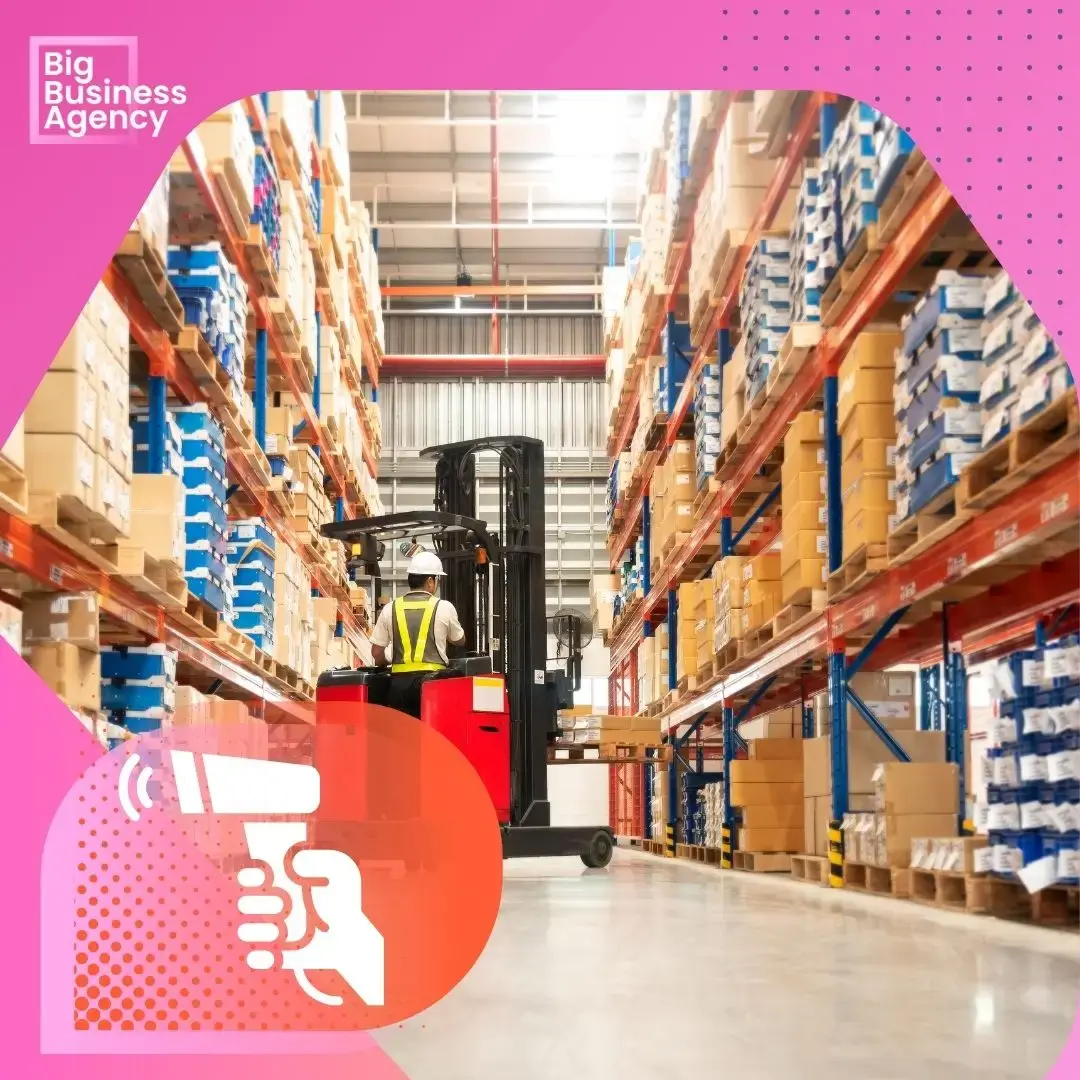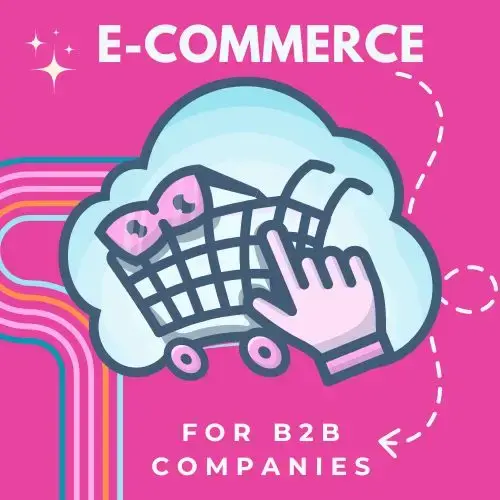eCommerce CRM for B2B firms - maximising your contract sales
Digitising B2B contracted customers with an easy-to-use integrated eCommerce CRM can transform your business with simplified operations. Imagine one...
6 min read
Peter
:
Dec 4, 2024 1:18:15 PM

The rapid advancement of e-commerce and the internet has revolutionised how businesses connect and cooperate with customers worldwide. This transformation is particularly significant in the B2B sector, where traditional barriers like geographical distance are increasingly giving way to new challenges, such as production capacity and turnaround times.
Gartner highlights, “As B2B commerce evolves, companies must adapt their inventory strategies to meet the dual demands of customer expectations and operational efficiency, ensuring resilience in dynamic markets.”
E-commerce, along with the strong development of social media and the internet, has opened up a more favourable context for businesses approaching and cooperating with customers worldwide.
Especially for the B2B market, when geographical distance is no longer the leading barrier, production capacity and turnaround time become decisive factors. To maintain their position and market share, they must ensure the supply of large volumes of goods in the fastest time possible.
From there, effective inventory management to ensure timely supply, meet production needs, and optimise turnaround time becomes the top urgent issue that many leaders and owners are concerned about.
This article will be a useful guide to B2B inventory management for owners, leaders, and inventory departments. From now on, they can successfully operate effective management strategies and increasingly develop in the challenging economic context.

Modernise the B2B inventory management process
B2B inventory management involves managing and controlling the quantity of goods in the B2B warehouse.
Some people may wonder if B2B vs B2C inventory management are similar?
The answer is no.
While B2C businesses focus on controlling numerous different items with relatively small quantities in each type, B2B warehouses manage fewer items but in huge quantities, because they will wholesale to a lot of partners, including B2C businesses.
In B2B companies, warehouse departments need to count what items are in stock, count how many there are, check the number of new materials, orders shipped, etc.
However, managing a B2B warehouse with hundreds of categories, input materials, finished goods, export orders, inventory, etc., is a real challenge.
These tasks also directly affect the production process, operating apparatus, and budget of the company, because if the current situation is not controlled on time, the company may experience a shortage of goods or excessive inventory.
Let’s think back to how many times you or your partners were unable to fulfill orders on time and had to pay hefty fines.
How many times have you heard of a business having to liquidate products or sell off inventory to recover capital?
Many companies had to fall into debt, even bankruptcy, due to the burden of excessive inventory.
For example, Company X specialises in supplying fresh beef to more than 30 supermarkets and restaurants in a city. Because of the favourable business, the owner decided to expand the market and increase the regular quantity by 30%.
However, increasing health awareness among consumers makes them prioritise choosing certified organic food sources over normal businesses. Many partners of Company X tend to reduce orders from them and import goods from organic suppliers.
As a result, orders decrease sharply while the shelf life is shorter and shorter. In the end, dumping is almost certain.
These unpredictable consequences help us realise the importance of inventory management. Only if businesses have smart and effective inventory management strategies will they stand firm in an increasingly competitive market of e-commerce and globalisation.
Let's go back to the above example of company X.
What would have happened if they could have seen the huge potential of organic food during their market research and inventory management? They could have anticipated the market demand and promptly replaced the amount of regular beef with organic products from quality farms or producers to diversify their beef products. They would have remained a strategic partner to their old customers and one of the top choices for their new customers.
The B2B market is characterised by large transactions and volumes of goods between businesses around the world, so inventory management faces numerous difficulties and challenges:

After understanding the importance and common challenges of inventory management in the B2B wholesale market, it becomes even more important to build an effective management strategy to optimise turnaround time and business costs.
The ABC method is to classify inventory into three basic categories for easy tracking and appropriate resource allocation for each product type. For example, you can divide your products into three main groups, including:
Accordingly, when receiving new orders corresponding to each category, the business can make appropriate purchasing decisions and allocate resources. From there, the business can avoid bulk purchasing which both wastes the budget and fails to satisfy the client's demands promptly.
What happens when a major partner suddenly calls you and says that he needs to import 40% more goods than his last month's order and expects you to deliver them earlier due to high market demand? When you have closely managed and accurately forecasted market demand, your customers will increase their satisfaction and trust in your business. They may share with their partners or friends that: "That business always meets my urgent demands; when I need to order, I always think of them first."
To be proactive, businesses have to strictly control inventory and plan periodic monitoring by week or month to promptly grasp real-time goods data.
Next, managers or business owners need to analyse statistical data to determine the purchasing trends of partners and the market.
Each item will have its own frequency and number of transactions, so determining which are the best-selling, which are the slowest-selling, which should be imported, etc., is crucial to creating a reasonable and practical purchasing plan.

Proactively monitor and predict demand
The just-in-time (JIT) method focuses on the actual needs of customers and only imports the necessary items within a certain period. From now on, businesses can limit the situation of excess inventory.
The vendor-managed inventory (VMI) method is the close cooperation between the distributor and the business or manufacturer. The distributor gives the manufacturer access to their inventory system so that the manufacturer can control the actual stock and delivery plan in time.
Inventory management software with automation technology will be a great choice to support inventory management and data statistics quickly and accurately.
First of all, we must mention the automation of the import, export, and management of goods using codes and barcode scanners. This method is quite effective and has helped to minimise errors commonly found in manual processes.

Manage inventory by barcode scanners
Businesses can also use professional B2B inventory management software to minimize costs and improve management efficiency.
As traditional businesses expand into B2B e-commerce, integrating inventory data between physical warehouses and virtual marketplaces becomes extremely challenging, particularly for companies with complex warehouse systems, distributed in different locations.
Therefore, businesses must invest in high-quality commercial platforms and inventory management software to optimise warehouse management processes and business activities efficiently. For example, when opening an online store on Magento, business owners can utilise the inventory management feature of Magento POS to synchronise real-time data between physical and virtual warehouses. Moreover, they can easily integrate with complex software systems in e-commerce.
B2B inventory management is a complex and urgent issue for businesses. With a huge amount of goods, complex management processes and countless orders, B2B companies need to diversify their inventory management methods to maximise advantages and minimise errors.
In the context of globalisation and increasingly developing e-commerce today, a B2B business no longer stops at traditional activities but needs to modernise to integrate with the global market.
Although this process is not easy, Big Business Agency will be a trusted companion for your business to conquer the domestic and global B2B market.
Related
What is B2B commerce all about?
Strategies for a more resilient supply chain
Transform your business with B2B eCommerce solutions
Sales Playbook - winning large enterprise deals
Get started with your Customer Portal
Reducing Help Desk Response Times
How do CIOs set their AI strategy?

Digitising B2B contracted customers with an easy-to-use integrated eCommerce CRM can transform your business with simplified operations. Imagine one...

91% of business owners say generating leads is their top challenge (source: Webfx)

As B2B buyers continue to evolve integrated B2B eCommerce continues to be vital. In fact, the global B2B eCommerce market is projected to reach $20.9...